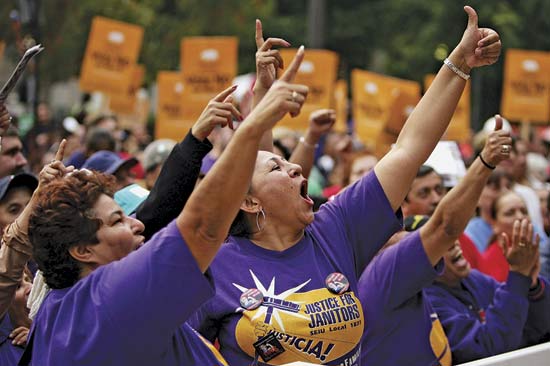
Machete 408 is back serving you up with a new series of postings after a summer hiatus. A continuing state of joblessness and downgrading to a slower internet connection both put a bit of a damper on the political juices that went into the blog. But despite these, there’s a nice backlog of recently published pieces that I hope Machete 408 readers will check out. Below is a collage of recommended and recently published articles and commentaries.
Did anyone notice a coup happening somewhere? Writing on the recent coup in Honduras, Jose Antonio Gutierrez of Ireland’s Worker Solidarity Movement (WSM) as well as the Frente de estudiantes Libertarios (FeL) in Chile, provides analysis with “Coup in Honduras: The Return of Guerillas or the Tactics of Attrition?.” Also is a piece on the potential of the recent popular uprising in Iran in response to stolen elections. “The Iranian Election, A ‘Legacy of Martyred Flowers’” is by Farah, an Iranian whom is also a member of the WSM. Both pieces appear on the Anarkismo international anarchist news and publishing site and Farah’s is followed by a lively debate in the comments section.
Looking at a global trend is “Workers Creating Hope: Factory Occupations and Self-Management” by Shawn Hattingh from Monthly Review Zine, which gives a brief overview of the growing factory and workplace occupations around the globe. The piece concludes, “The actions of these workers [involved in occupations] are inspirational. It seems likely that more and more workers will begin adopting and adapting the idea of factory occupations as a viable way to save jobs and reclaim the dignity that bosses have tried to take away from them. Perhaps what we are also seeing through the occupations, takeovers, and self-management is a glimpse of what a post-capitalist world, created by the workers and the poor themselves, would look like.”
 On the movement and political analysis tip is the Advance the Struggle blog, founded earlier this year and written by Bay Area writers influenced by various strains of Marxism. Of interest are several pieces debating the movement that surrounded the killing of Black, 22 year old Oakland resident, Oscar Grant at a BART station on New Years Day 2009. Included is three pieces. “Unfinished Acts” is an insurrectionary anarchist piece created in the format of a composite narrative play; “Justice for Oscar Grant: A Missed Opportunity?” is a solid piece with excellent critical analysis of both the role of the RCP and the non-profit dominated CAPE coalition that led much of the community response; and “Bring the Struggle, Advance the Ruckus” a response to “Missed Opportunity” by Oakland members of the revolutionary group Bring The Ruckus is also worthwhile as well. I won’t link the pieces individually, instead you should go to their blog and find them.
On the movement and political analysis tip is the Advance the Struggle blog, founded earlier this year and written by Bay Area writers influenced by various strains of Marxism. Of interest are several pieces debating the movement that surrounded the killing of Black, 22 year old Oakland resident, Oscar Grant at a BART station on New Years Day 2009. Included is three pieces. “Unfinished Acts” is an insurrectionary anarchist piece created in the format of a composite narrative play; “Justice for Oscar Grant: A Missed Opportunity?” is a solid piece with excellent critical analysis of both the role of the RCP and the non-profit dominated CAPE coalition that led much of the community response; and “Bring the Struggle, Advance the Ruckus” a response to “Missed Opportunity” by Oakland members of the revolutionary group Bring The Ruckus is also worthwhile as well. I won’t link the pieces individually, instead you should go to their blog and find them.
For all those in the labor movement disillusioned with the lack of passage of EFCA (suprise, suprise) is the article “Introducing the Employee Liberation Act” by Daniel Gross of the IWW. There is much to be critical about of the EFCA (See the Machete 408 piece on EFCA here), but what Gross provides us with is a total rethinking of what ails the labor movement and what changes in the legal arena might actually allow for advances by workers instead of card check recognition. Its a bit of a wish list, but what he proposes is a three pronged bill that would: 1) Make discrimination against organizing in the workplace on par with federal civil rights protections around race and gender discrimination. This would make worker rights a recognized civil right as it should; 2) End the second class, modern Jim Crow status of undocumented immigrants in workplace across the US; and 3) Eliminate legal barriers and restrictions on strikes, which would unleash worker’s most powerful weapons against the power of bosses: that of solidarity and the ability to bring profits to a halt.
On an uplifting note is an AK Press blog picture report on the 2nd Annual LA Southern California Anarchist Conference, with nice shots of the jewlery, cultural and publishing vendors, as well as some of the performers and presenters for the event.

Finally, on the anarchist political organization theory front we have the long awaited English translation of “Huerta Grande” by a good comrade at The Left Winger blog. The 1972 piece is considered a seminal theoretical text of the Federación Anarquista Uruguaya (FAU), which played a leading role in spawning the especifist current within the South American anarchist movement. Also be sure to read this “quick and dirty rought history piece” on the FAU for background and context.
As well, we have a recent translation of South American Anarchist philosopher Angel Cappelletti (1927-1995) posted on the AK Press Blog “Revolution by the Book.” Cappelletti was born in Argentina and spent the later half of his life in Venezuela, becoming a key intellectual figure in the libertarian left, authoring several works on philosophy, anarchism and Latin America. Supporters have recently created a Spanish language archive site of his work. And last but not least is another piece from Jose Antonio Gutierrez, who again offers us some worthwhile thoughts, but this time on strategy and the role of anarchist organization with his Considerations About the Anarchist Program. Here’s an excerpt:
The essence of the Platform is how to build an organisation that unites like-minded anarchists based on concrete proposals and tactics – that is, a “political organisation” as opposed to what is a purely ideological group. In this tradition, it is perfectly fair that we ask ourselves how many of our organisations, leaving aside any pretensions, have actually managed to reach the level of development of a political organisation. At present, the majority of these groupings are only propaganda groups. The principle difference between a political organisation and a propaganda group is not its number of militants nor its level of militancy, nor even the political insertion of its members. The principle difference is the simple answer to the question: what can we offer the people? While propaganda groups can not offer more than a political and ideological vision and, in the best cases, a few slogans, the revolutionary political organisation can offer a course of action; a programme; a tactical line; a strategy; short-, medium- and long-term objectives.
Filed under: Anarchism, Article Repost, current events, Labor, Latin America, News | Tagged: Advance the Struggle, AK Press, Anarchism, Angel Cappelleti, Bring the Ruckus, CAPE Coalition, EFCA, Employee Liberation Act, Especifismo, Factory Occupations, Honduras, honduras coup, Huerta Grande, Iran, Iran protest, Iranian election, IWW, Jose Antonio Gutierrez, Monthly Review, Oscar Grant, RCP, Workers Solidarity Movement | 1 Comment »









 The corporations got sloppy. From the hedge-fund parasites to the housing market fraudsters, the corporate criminals have shown their hand. Their filthy fingerprints are all over the economic pain blanketing the country and the world.
The corporations got sloppy. From the hedge-fund parasites to the housing market fraudsters, the corporate criminals have shown their hand. Their filthy fingerprints are all over the economic pain blanketing the country and the world.